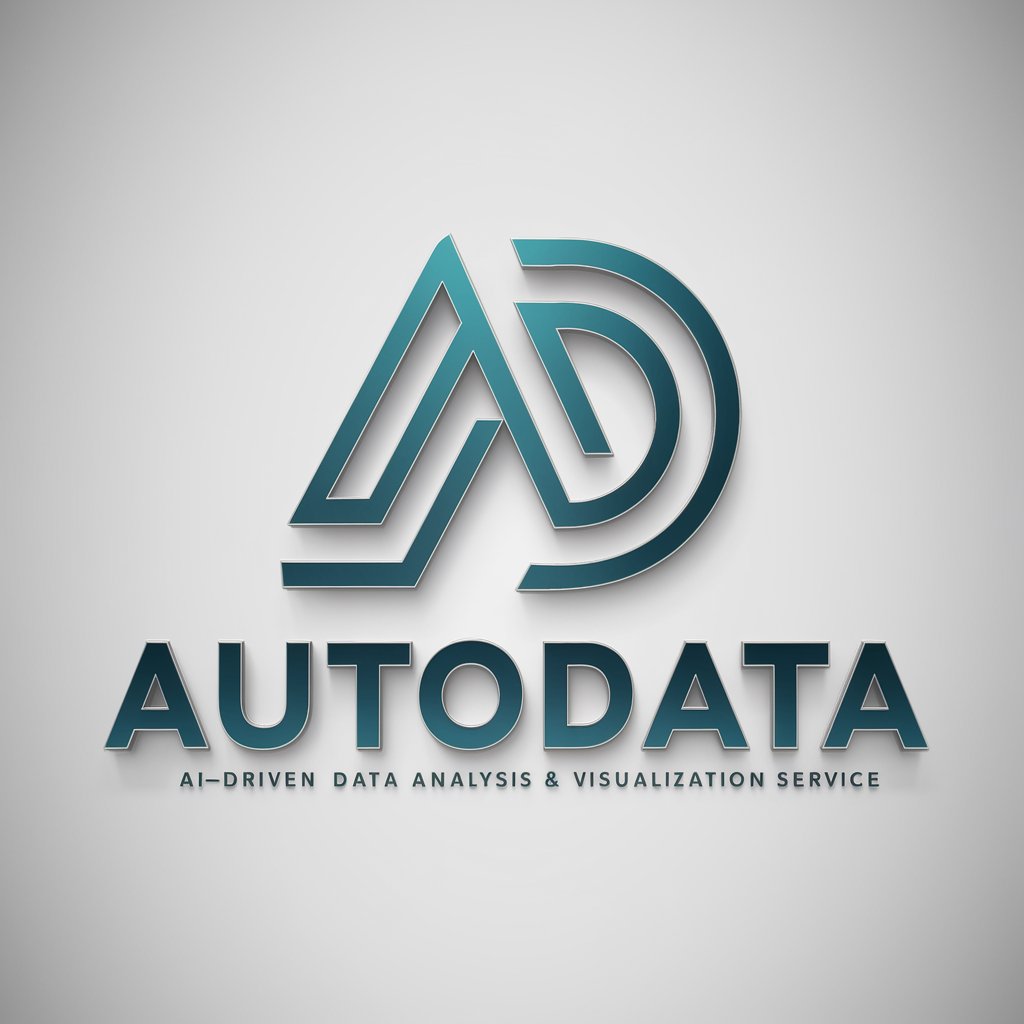
AutoData - AI-Powered Data Analysis

Welcome to AutoData, your AI-powered data analysis companion.
Transform data into insights with AI
Analyze this dataset for trends in sales performance over the last quarter.
Generate a visualization showing the correlation between advertising spend and customer acquisition.
Provide a detailed summary of the latest financial data, highlighting key insights and anomalies.
Create a report that forecasts the next quarter's growth based on current market trends.
Get Embed Code
Overview of AutoData
AutoData is designed as a sophisticated, AI-driven platform aimed at offering advanced data analysis, processing, and visualization capabilities through API endpoints. The primary purpose of AutoData is to facilitate seamless integration with external systems, allowing users to send data or queries and receive insights in real-time, formatted in JSON for easy interpretation and further application. This design enables a wide range of functionalities, from simple data transformations to complex analytical models, making it a versatile tool for various data-related tasks. Examples of its application include automating data workflows, generating real-time analytics for live data streams, and providing customizable data visualizations to suit specific user needs. Powered by ChatGPT-4o。

Core Functions of AutoData
Real-time Data Analysis
Example
Analyzing financial market trends to provide investment insights.
Scenario
Financial analysts use AutoData to process live market data, applying sophisticated algorithms to predict market movements and identify investment opportunities.
Data Visualization
Example
Generating dynamic, interactive charts for web applications.
Scenario
Web developers integrate AutoData to automatically create and update visual representations of user data within their applications, enhancing user experience through interactive and informative charts.
Automated Data Workflows
Example
Streamlining data collection and reporting processes for businesses.
Scenario
Operations managers set up automated workflows with AutoData to regularly collect data from various sources, analyze it for insights, and generate comprehensive reports, reducing manual work and improving decision-making efficiency.
Custom Analytics Models
Example
Creating tailored models for predictive analysis in specific industries.
Scenario
Data scientists utilize AutoData to develop and deploy custom models that predict industry-specific trends and behaviors, enabling companies to stay ahead of the curve by leveraging predictive analytics.
Target User Groups for AutoData
Data Scientists and Analysts
Professionals who require advanced tools for data analysis, model building, and insights generation. They benefit from AutoData's ability to process complex datasets and provide customized analytics solutions.
Software Developers and Engineers
Individuals who need to integrate data processing and visualization capabilities into their applications. AutoData's API-driven approach allows for seamless integration, enhancing the functionality and value of software products.
Operations Managers
Managers overseeing business operations who need to automate data workflows, optimize processes, and make data-driven decisions. AutoData can streamline data collection, analysis, and reporting, improving operational efficiency.
Marketing Professionals
Marketers looking to understand customer behavior, market trends, and campaign performance through data. AutoData's analytics and visualization tools enable them to derive actionable insights and tailor their strategies accordingly.

How to Use AutoData
Initiate Trial
Begin by visiting yeschat.ai to start a free trial; no account creation or ChatGPT Plus subscription necessary.
Explore Features
Familiarize yourself with AutoData's features and capabilities through the provided documentation and tutorials.
Set Up API
Configure your system to connect with AutoData's API endpoints, ensuring you meet all technical prerequisites.
Send Requests
Start sending data or queries via API calls to AutoData, utilizing the examples in the documentation for guidance.
Analyze Results
Receive and analyze the JSON-formatted responses from AutoData, applying the insights to your specific use case.
Try other advanced and practical GPTs
NYC Lease Advisor
Empowering Lease Decisions with AI

哒哒web design course with interview
Master Web Design and Interviews with AI-Powered Guidance

Ask Marco | Your Travel Guide
Navigate the world with AI-powered travel insights.

GTA: How to Make Real Money Playing this Videogame
Monetize Your GTA Expertise

First Destiny RPG 3 : Outerworlds
An AI-powered journey through outer realms.

Stock Stud
Empower Your Investments with AI-Driven Analysis

Local SEO Services
Elevate Your Local Presence with AI

SliderTech Guru
Revolutionizing Presentations with AI

IMAGINARIS Design
Empowering Brand Identities with AI

Bali Travel Guide
Explore Bali with AI-powered insights

Mystic Oracle
Unlock the future with AI-powered mystique

WooCommerce
Empowering Online Sales with AI

Frequently Asked Questions about AutoData
What is AutoData?
AutoData is an AI-powered tool designed to process data and queries through API calls, providing users with fast, JSON-formatted responses for data analysis and visualization.
Who can use AutoData?
AutoData is suitable for developers, data scientists, and businesses looking for efficient data processing and analysis solutions.
What types of data can AutoData process?
AutoData can handle a variety of data types, including text, numerical data, and structured data formats like JSON or CSV.
How secure is AutoData?
AutoData employs state-of-the-art security measures to protect your data and queries, ensuring confidentiality and integrity.
Can AutoData integrate with existing systems?
Yes, AutoData's API can be easily integrated with most existing systems, allowing for seamless data exchange and processing.





